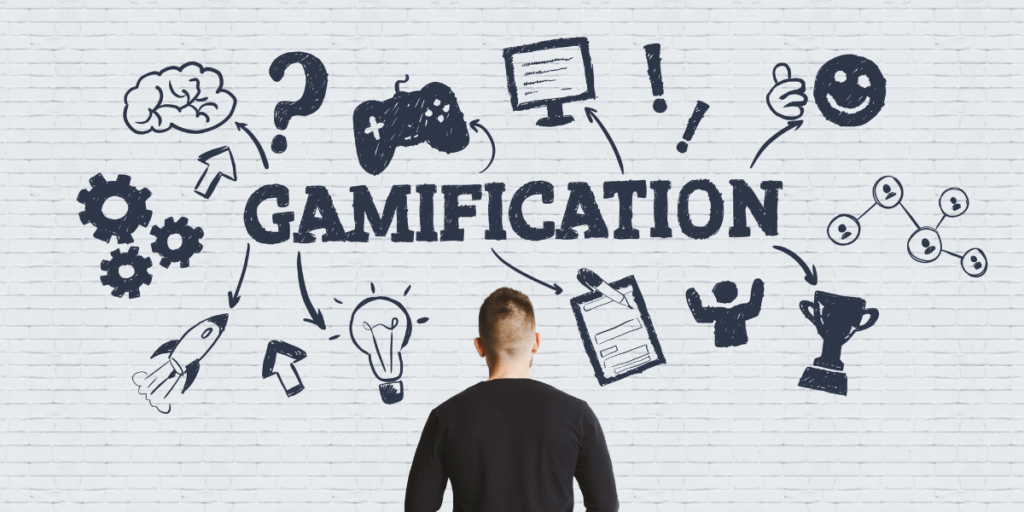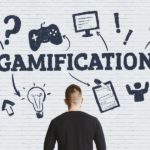Gamification for a Successful Marketing and Business
Games were anciently created to motivate people to execute things. The power of “Fun” has had, since the creation of games, a huge impact on people’s approach to activities, strategy for business and source of motivation for customers to buy or consume content.
In particular, sport ‘games’ were originally created to entertain people while watching and make participants take action with a purpose. Ancient games, like naval battles or gladiators’ fights, were used to keep people’s minds entertained and engaged during poverty and famine. Board Games like Chess were created to educate soldiers on military strategy. Therefore, games and their elements have always been used to entertain, engage and educate people.
What is gamification?
Gamification is not a new concept. Even though the term “gamification” has been coined in more recent times, the concept was already present in many areas of life for as long as civilisation has existed. In the children’s bedtime story, Mary Poppins, gamification sums up quite well with the quote “In every job that must be done, there is an element of fun. You find the fun and SNAP! the job’s a game.” The key aspect here is therefore that any task or job can be turned into a fun activity by making it into a game – and that is exactly what gamification is.

So, gamification can be defined as the application of typical elements of game playing to other areas of activity, aiming to involve and stimulate users to reach a certain goal. It can also be defined as a set of activities and processes to solve problems by using or applying the characteristics of game elements. These elements can be added to nongame environments to make them more engaging, like a website, online community, learning management system or business’ intranet to increase participation. These game mechanics are often used a marketing technique to encourage engagement with a product or service. Therefore, the goal of gamification is to engage with consumers, employees and partners to inspire, collaborate, share and interact.
Classic game elements are:
- Scores – the foundation of a gamification system. Scores help users to establish status or unlock other features. Engagement is granted.
- Badges – social indicators of achievement or mastery of a skill aimed at competition and motivation.
- Levels – medium-long term indicators of the results gained that motivate users to reach a goal.
- Rankings – useful to motivate users by comparing their position to others.
- Rewards – obtainable by achieving certain goals. Able to keep user engagement high over time.
In GAMS platform we adopted gamification methods to stimulate users to play and learn at the same time with tools and platforms of marketing and advertising. In the platform it is possible to find the game elements:
- Levels – levels in GAMS are related to Challenges, the exercises built from professionals that users must complete to learn and validate their competencies.
- Scores – users perform the Challenges gaining scores related to their ability on solving them. The gained scores are collected into the Profile Scorecard, the final issued certification.
- Badges – in every Challenge, users might gain like-a-pro badges attesting Challenges completion with the highest score possible.
- Rewards – the Profile Scorecard (PSC) is the output of the process that users follow in the platform and it certifies what the user can do for real. Obtaining good scores to show in the PSC it is helpful for the user to show his competencies to recruiters all in one certificate. It can be attached to the CV or it can be added to the Linkedin profile.
- Rankings – a new feature coming in GAMS platform. Users will be able to compare their scores to others and that it will be visible to all our partner companies looking for the best candidates.
How does Gamification work?
Gamification works by providing audiences with feedback and directives through game mechanics. Plus, game dynamics are applied to online platforms and websites to lead people to accomplishments of goals and objectives.
For this reason, a gamification experience touches a participant’s emotions and is able to collect and easily show the best activities an audience can complete. And this information can make an impact on mutually shared goals. For example, as employees or customers interact with a gamification program, they receive immediate feedback on performance and guided next steps towards new achievements.
The world-leading Gamification expert, Yu-kai Chou, believes that true gamification happens when a platform or program taps into our core human drives. Chou also believes these core drives are key to bring fun and engagement into almost any task.

These 8 universal core drives are:
- Meaning – the desire to feel that our actions have a purpose.
- Accomplishment – The drive to achieve and overcome challenges.
- Empowerment – The desire to choose one’s own direction and try a variety of solutions to a problem.
- Ownership – The desire to own things and have possession.
- Social Influence – The drive to interact with, help, learn from, and compete with others.
- Scarcity – The drive of wanting things you can’t have.
- Unpredictability – The drive of wanting to know what will happen next.
- Avoidance – The drive to avoid pain or negative consequences.
According to Yu-Kai Chou, the ability to use these core drivers determine the history and effectiveness of the game’s elements like scores, badges, levels, ranking and reward. For instance, the scoring system makes people feel like they have a meaning, purpose and a sense of progression. Badges tap into the need for accomplishment and reward. Levels and ranking appeal to our need for social status and influence, together with a sense of progression towards our final goal. Finally, rewards are important for satisfaction and keeping high motivation.
Therefore, understanding the psychology behind human’s core drives is crucial to create games campaigns and gamified actions that are successful. Plus, following the gamification strategy and appealing to the core drivers for the creation of activities, programs and platforms has proven to be more engaging for users and, therefore, have a higher likelihood of being shared and promoted.
Gamification in learning
So, we now know how gamification is used and applied to contexts such as marketing activities, engagement programs or learning activities. In particular, gamification of learning is an educational approach to motivate students to learn by using game elements in learning environments.
The goal is to maximize enjoyment and engagement by capturing the interest of learners and inspiring them to continue learning. The great engagement results coming from game-based elements applied to learning materials have to do with the addictive features of video games both for children and adults. According to the gamification theory in education, students learn and remember concepts best when they are also having fun. In addition, they are motivated to learn when having goals, targets and achievements to reach for.
As a result, gamification in learning offers a number of benefits. First, students feel more active since they have ownership over their learning and progress instead of passively acquiring knowledge from teachers. The more relaxed atmosphere in regards to failure makes students more comfortable and so more proactive and open to making mistakes, which is at the base of learning. Plus, students get their hands ‘dirty’, by learning by doing – a very effective way of earning skills by applying them to practical scenarios.
At GAMS, we embrace the concept of gamification in learning by using game-based elements to teach students how to use the most requested marketing and advertising tools. In the platform, we give users the opportunity to play and learn at the same time. Challenge by Challenge, users can:
- learn and validate their hard skills with marketing & advertising tools used every day by professionals
- gain scores that can be compared to the ones of other players
- may get some special Badges based on their ability to solve the assigned tasks
- get the Profile Scorecard to complete their CVs and speed up the recruitment process. Check out a sample Profile Scorecard by our founder, and get yours too!






